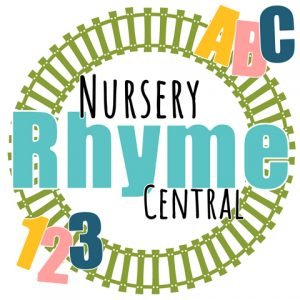Singing a child to sleep is familiar to most cultures and can almost be seen as instinctive human behavior. The songs we sing at bedtime are often traditional ones that we remember from childhood, forming part of our cultural heritage. Many of these lullabies are also learned at kindergarten or even on television as nursery rhymes. But are nursery rhymes and lullabies the same thing? What is the difference?
A lullaby is a song sung to lull children to sleep. Traditional lullabies are classified as nursery rhymes, which are simple songs or poems for babies and young. But any song sung to soothe a child can be classified as a functional lullaby.
Most of us are familiar with nursery rhymes, those nonsense songs that little kids sing and clap along with. It makes sense that nursery rhymes are suitable for entertaining children and even teaching them about rhythm, rhyme, language, and counting. But what about the songs sung to infants at bedtime? Do these count as nursery rhymes? And what is the point of singing lullabies to babies?

What is a lullaby?
Lullabies are simple songs sung to children, especially babies, to comfort and calm them as they fall asleep. The word ‘lullaby’ comes from the English words’ lull’ (meaning calm) and ‘bye’ (meaning near), but could also come from the ‘la la’ sounds people make to calm babies. Another word for lullaby is ‘cradle song’, meaning a song sung to a baby in an old-fashioned rocking baby bed.
Found in all cultures and languages, lullabies are among the oldest songs for children. A Babylonian lullaby has been found on a cuneiform tablet, dating to 4000 years ago. This ancient lullaby’s words encourage the infant to stop crying because the noise is disturbing the house god, who is getting angry. Examples of lullabies in Latin date back to Roman times, where the baby is told to go to sleep or drink milk and be quiet. There are even Medieval lullabies depicting Mary singing to baby Jesus.
The words of lullabies from different cultures vary, although most express love and hope for the child. In ‘Bye Baby Bunting’, the child’s father has gone hunting to provide for the baby, specifically to get a warm rabbit skin to keep the child cozy. In some cultures, lullabies were sung as a charm or ‘spell’ of protection over a child. In others, lullabies were a kind of prayer.
What is characteristic of all lullabies is their gentle and soothing tone and rhythmical melody. According to musicologists, most lullabies are written in 3/4 time or triple meter, which gives them a characteristic rocking rhythm, echoing the rocking of a cradle, a parent’s arms, or even the motion of being in the mother’s womb. This rhythm is what soothes even tiny babies, who from birth can recognize patterns of movement and sound, which are the beginnings of learning music and speech.
Are lullabies the same as nursery rhymes?
Nursery rhymes are simple, traditional songs and rhymes for children, aiming to educate and entertain them. The word ‘nursery’ has the same root as ‘nurse’ or breastfeed, which indicates that these rhymes are intended even for tiny children. The ‘nursery’ in a house is the children’s room. A ‘nursery’ is also another word for kindergarten.
Because lullabies are songs for children, they are included in the literary classification of nursery rhymes. The first written lullabies were published in collections of songs or rhymes for children. For example, ‘Rock-a-bye, baby on the tree top’ was published in England by John Newbery in his collection of songs and rhymes for children in 1765.
However, the term ‘nursery rhymes’ includes more than just lullabies. Other kinds of nursery rhymes are tickling games, riddles, alphabet songs, counting songs, folk songs, and even sayings.
Nursery rhymes vs. lullabies: A comparison
Lullabies are a kind of nursery rhyme but can be differentiated from other nursery rhymes by their purpose, target audience, and who is singing.
| Lullaby | Nursery rhyme | |
| Purpose | Sung at bedtime to soothe and lull a child to sleep | For general entertainment and education |
| Target audience | Infants and babies | Small children, especially toddlers |
| Singer | Parent or caregiver | Parent, caregiver, teacher, children |
The Dark Side of Lullabies
One of the interesting things about lullabies (and many nursery rhymes) is that their words do not always seem suitable for children, let alone be sung to babies at bedtime. For example, in ‘Rock-a-bye, baby’, the cradle is in a dangerous place – high in a tree. The lullaby ends with the ‘baby, cradle, and all’ crashing down out of the tree. In the famous American lullaby, the mockingbird won’t sing, and other disasters happen. In a traditional Luo lullaby from Kenya, hyenas are prowling.
The words of lullabies seem more appropriate for adults because lullabies, especially as sung to tiny babies, are really for the benefit of the singer – the parent or caregiver who is singing. Nighttime is traditionally a time of darkness and fear, and in the past especially, there would have been real threats to the fragile lives of children. Psychologists suggest that the parent can share their concerns, especially of loss or harm to the precious infants, while at the same time protecting them and keeping them safe – singing lullabies thus acts as a kind of therapy
The Benefits of Singing Lullabies to Babies and Children
Toys and devices that play lullabies to babies are ubiquitous, and infants do enjoy them. However, studies have shown that singing lullabies to babies benefits both the parent or caregiver and the baby. These are some benefits of singing lullabies.
Bonding
Singing while rocking or holding a baby increases the emotional bonding experience and closeness between a parent or caregiver and the infant. Bonding is essential, especially for newborns, as the so-called love hormone, oxytocin, is released in both mother and baby – both during breastfeeding and singing.
Creating a bedtime ritual of singing lullabies is an excellent way to build a relationship with a baby and help them to sleep, as babies will relax and feel safe in the presence of someone who loves, protects and cares for them.
Stress reduction
Many studies have proven that listening to music or singing can reduce stress by stimulating positive emotions through neural connections. Similarly, singing lullabies reduces stress in both the singer (parent or caregiver) and the infant. Some preliminary studies have shown that singing to premature babies improves their growth and speeds up healing.
Establishing a routine
Once a baby is used to falling asleep by being sung to, you can establish a bedtime routine. Instilling bedtime habits helps a baby feel secure and adjust from daytime to nighttime. Singing will then be a signal to the baby’s brain that it is time to sleep. A bedtime routine will help ensure a good sleeping pattern.
Sharing cultural heritage
Our cultural heritage can be passed to our children through traditional songs and music and by language, food, and customs. Singing traditional lullabies begins this process in infants.
Language acquisition
Even newborns can hear and distinguish between sounds. The repetitive and rhythmical nature of lullabies helps to teach babies about pattern, emphasis, pitch, and words, all the basis of learning language and the language of music.
These benefits can be shared and enjoyed whether you know traditional lullabies and nursery rhymes or not. And because it is the soothing, crooning voice and security of being held, patted, and sung to that puts the child to sleep, any song you sing gently to calm a child can become a ‘functional lullaby’.
So…..What is the Difference Between a Lullaby and a Nursery Rhyme?
Lullabies and nursery rhymes are similar but not the same. Lullabies form part of the general nursery rhyme classification. However, lullabies have the specific purpose of being sung by the parent or caregiver to an infant or baby that needs soothing or lulling to sleep. The benefits of singing lullabies to babies are enormous, contributing to psychological, physical, cultural, and linguistic development. Singing to babies is positive, whether you know the words to traditional lullabies, sing modern songs in a gentle lullaby style, or even make up your own words!

